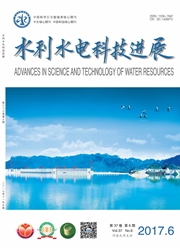

 中文摘要:
中文摘要:
基于20世纪80年代以来公开发表的文献,调研了我国地表水体(河流、湖泊、水库、近海海域)粪大肠菌群的含量,对粪大肠菌群含量的时空分布及变化进行了分析,并对影响这种分布特性的因素进行了系统的分析和讨论。结果表明:我国地表水体粪大肠菌群含量普遍较高,受到较为严重的粪便污染,其中河流水系含量最高,湖泊、海域次之,水库最低:粪大肠菌群含量的年际和年内波动都较大,年内丰水期含量高于枯水期含量:粪大肠菌群含量的空间分布特性为南北无明显差异,东部水域含量高于西部水域含量,下游水体含量高于上游水体含量,近岸水体含量高于远岸水体含量,人为干扰严重的水体含量高于干扰轻的水体含量。降雨径流对粪大肠菌群含量的时空变化存在非常显著的影响,同时水体有机物含量、富营养化程度、盐度及温度等物理化学特性也影响着粪大肠菌群在水体中的分布。
 英文摘要:
英文摘要:
Fecal Coliform ( FC) concentration in surface waters, such as, rivers, lakes, reservoirs and coastal areas, of China was surveyed based on literatures published since 1980s. From the survey, the temporal variation and the spatial distribution of FC concentration is analyzed, and then influencing factors on distribution characteristics of FC are systematically discussed. The results demonstrate that FC concentration is generally high throughout the surface waters in China, which indicates that the waters suffer a severe microbial contamination. Rivers are most severely contaminated among different water bodies while reservoirs are cleanest. The concentration of FC shows significant inter-annual and intra-annual fluctuations, with the concentration in wet seasons being much greater than that in dry seasons. There is no obvious distribution pattern of FC concentration between southern and northern waters, while the FC concentration in eastern areas is obviously greater than that in western areas. The FC concentration in lower reaches of rivers is greater than that in the upper reaches, and the FC concentration near shore is greater than offshore. These indicate that human actions significantly increase the concentration of FC. Rainfall-runoff has a significant impact on the temporal variation and spatial distribution of FC. Besides, many other physical-chemical factors, including organic content, trophic level, salinity, and temperature of water are also responsible for the spatial distribution and temporal variation of concentration of FC.
 同期刊论文项目
同期刊论文项目
 同项目期刊论文
同项目期刊论文
 期刊信息
期刊信息
